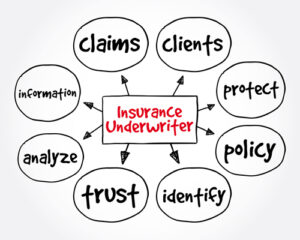
Is Underwriting as a stressful job? This question has been doing rounds for quite some time & we thought it’s the right time to take a deep dive into this subject. In Indian Context, the best way to look at this is to understand the way the Life Insurance Industry has evolved from a product perspective.
In early 2000, when the era of private life insurance companies began, the industry sold ULIPs & non term policies only. Term plan was a rarity. This meant the focus was on core medical & financial assessment. An underwriter’s job was mainly to evaluate if the applicant is eligible for the cover applied basis set of standard income evidence and ascertain if it’s a standard or sub-standard life basis disclosure made & set of medical testing done. Medical testing for insurance was always basis age and aggregated sum cover applied. Assessing premium paying capacity was also important from a persistency perspective. Sometime in the decade, one company introduced a Preferred Plan wherein a better rate was offered to an applicant who was a proven non- smoker (Cotinine Report Negative). This meant Underwriter was supposed to check an additional parameter (Smoker/Non-Smoker) and an additional testing (Urine Cotinine) got added.

By 2010, the focus had shifted and almost all companies had Term Plans. Some had Preferred Term Plan (PTP), few had High Netwoth Term Plan (HNTP). While, which portfolio turned profitable and which one phased out is a different discussion, an Underwriter’s job got more demanding. On the financial side, an Underwriter was required to distinguish between “Earned” and “Unearned” Income (since Term Plan can be offered only to compensate loss of Earned Income). Add to that, the fine sense of judgement required to un-mask applicants who were not gainfully employed (Housewife, Student, Retired, Sleeping Partner etc). Lastly consistency of income (critical for self- employed applicants) had to be ensured. The medical assessment got more stringent, few more tests (USG & 2 D Echo) got added to the medical grid. For underwriting of Preferred Term Plan a separate medical assessment matrix was introduced. Only applicants with BMI in the range of 18-25, Blood Pressure less than or equal to 120/80, no habit of smoking or drinking, no personal or family history, all blood, urine, and cardiac testing within normal limit qualified for Preferred Term Plan. For HNTP, minimum earned income had to be higher than average. This meant Underwriter, again, had to be more vigilant.

There were some insurers who were focussed on selling Online (digitally procured) Term plan only and Underwriting philosophy for Online Term plan happened to be significantly different from Offline Term Plans. The customer base for online term plans was mostly urban population and millennials. This segment of applicants demanded a frictionless customer journey, which meant underwriting also had to be innovative & “on the go”. The tools of Tele MER & Video MER got introduced. Tele MER & Video MER proved to be better tools of assessment as compared to a traditional physical MER as they provided better disclosure rates. Add the convenience factor. Another innovation was use of external or third-party database (like Credit Bureau) for financial underwriting. An applicant was not required to share standard income evidence up to a particular sum assured. Financial Underwriting was done basis proxy parameters like Credit Score and Income Estimator (inputs from Credit Bureau). However, these privileges were not made available to all applicants, only profiled applicants (defined by Age, Education, Income, Occupation) were eligible and Underwriters had to diligently check the qualification parameters. Assessment would come later.
Another change that took place was, “Profiled” Term Plan replaced “Aggregate” Term Plans. Product Entry Criteria was made more stringent; minimum Sum Assured became Rs 50 Lakhs for most insurers and minimum Education, Occupation, Income, were also defined. It would be highly possible that a given applicant would qualify in the product entry criteria but would not be eligible for Video MER and/or Financial Waiver. From an underwriting standpoint what is important is the check points and risk assessment parameters increased by the day.

+91 7045548825
info@inchesgroup.com
901- Harbhajan Commercial Complex, Plot No. 4954A, B, B1 to B7, Opp Petrol Pump, CST Road, Kalina, Santacruz (East) Mumbai – 400098